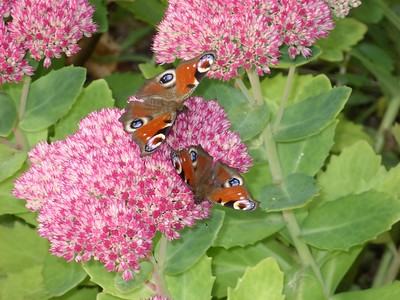Funding to restore nature and tackle biodiversity loss

New £10 million Nature Restoration Fund for local and national projects.
Projects that restore nature, safeguard wildlife and tackle the causes of biodiversity loss and climate change will get a share of £10 million through a new Scottish Government fund.
The Nature Restoration Fund will support a mix of urban and rural-focused projects, such as improving greenspace for outdoor learning, green active travel routes, planting of wildlife corridors and natural flood management.
Half of the funding will go to local authorities to develop new or existing projects which help address the twin crises of biodiversity loss and climate change, but which also aim to promote the health and wellbeing of local communities and reduce inequalities.
The remaining £5 million will include a small project competitive fund of £1 million to be distributed by NatureScot, and the balance will go directly to established nature restoration projects across Scotland, including native-tree planting, nature restoration in rivers, lochs and coasts, and improving and connecting habitats.
The competitive element of the Nature Restoration Fund is now open for applications, with a closing date of 27 July 2021. The Fund encourages applications from projects that support actions that help nature recover across Scotland. The Fund has 2 themes:
- Making Space for Nature (urban focused nature based solutions for biodiversity and climate change); and
- Helping nature recover (rural focused biodiversity enhancement, climate resilience and reinstatement).
For full details and to apply, visit the NatureScot website.
To announce the new funding, Environment Minister Mairi McAllan visited Malls Mire, a community regeneration project in North Toryglen, Glasgow where 15 hectares of land has been turned by Clyde Gateway and Urban Roots into park, wetland and woodland with accessible paths.
She said: “Our new £10 million fund will help address the twin challenges of biodiversity loss and climate change in a way that supports Scotland’s urban and rural communities and tackles inequalities.
“And it’s just one of a range of actions we’re taking. From our ground breaking work leading the international ‘Edinburgh Process’ to investing in locally driven nature restoration projects in urban, rural and coastal Scotland, we’re helping to improve the health and wellbeing of communities, improve air and water quality, create green jobs and tackle climate change and biodiversity loss.
“As we prepare to welcome COP26 to Glasgow later this year, we’re committed to raising our ambition for nature’s recovery. Our Statement of Intent sets out our ambitions and includes a new voluntary commitment to protect 30% of our land for nature by 2030.”
NatureScot Chief Executive Francesca Osowska said: “More people than ever now understand and support the need to put nature at the heart of our recovery from the twin crises of biodiversity loss and climate change. With COP15 and COP26 coming up, Scotland has a huge opportunity to address the many challenges and pressures that nature is facing.
“This £10 million investment is a significant boost for nature restoration, allowing us to support many more projects working to put our woodlands, peatlands, rivers and seas back on the road to recovery – taking carbon out of the atmosphere, adapting to climate change and reducing the risks of flood, drought and wildfire.
“These nature-based solutions will not only help us reach net zero by 2045, they’ll provide the nature-rich future we need for a healthier, more resilient Scotland.”
Background
The Scottish Government’s 2021-22 budget announcement contained a commitment for a new Nature Restoration Fund (NRF) to provide additional funding for biodiversity. This will go towards developing and delivering a new scheme offering funding for a wider range of projects that deliver nature restoration, safeguard our wildlife and tackle the causes of biodiversity loss – especially climate change.
Local authorities will be required to submit details of how funding had been distributed to ensure outcomes have been achieved.
In conjunction with the UN Convention on Biological Diversity (CBD) the Scottish Government is leading the 'Edinburgh Process’ of consultation with sub-national governments, including regional, city and local authorities on their role in the post-2020 global biodiversity framework and targets which will be agreed at the Conference of Parties meeting – COP15 – in Kunming, China in 2021.
Read the Scottish Government’s biodiversity strategy post 2020: statement of intent


